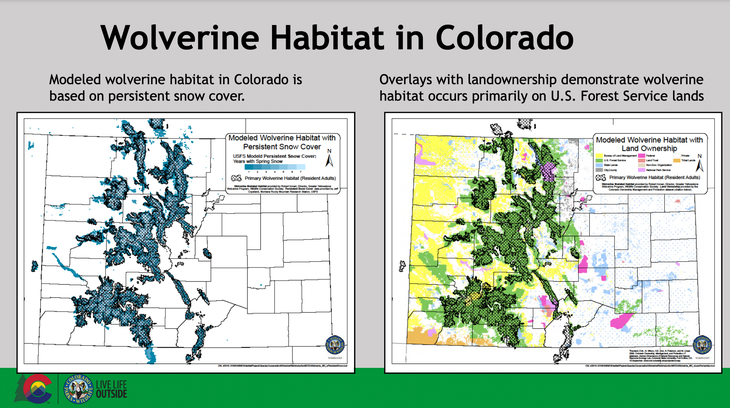Products You May Like
Receive $50 off an eligible $100 purchase at the Outside Shop, where you’ll find gear for all your adventures outdoors.
Sign up for Outside+ today.
For the past two years, conservationists, ranchers, and hikers have been wrangling over Colorado’s voter-approved plan to reintroduce wolves to the state’s wild areas. Now, wildlife authorities say they’re considering bringing back another long-absent predator: wolverines.
The plan to reintroduce wolverines isn’t new. As The Colorado Sun‘s Jason Blevins, who first reported on the story, recounted earlier this week, Colorado Parks and Wildlife (CPW) first began investigating the possibility of bringing back the species in 2010, and created a detailed reintroduction plan before mothballing it for a decade. In 2020, CPW Director Dan Prenzlow brought up wolverines again on the agency’s Colorado Outdoors Podcast, saying that the agency was having “robust discussions” about bringing them back. In February, Colorado’s First Gentleman Marlon Reis endorsed the idea in a Facebook post, calling the animals “an icon of arctic and alpine environments.”
CPW spokesperson Travis Duncan told the Sun that the agency plans on contracting a wolverine expert to review and update the reintroduction plan, and hopes to be able to share more details soon. A presentation from a 2019 Colorado Parks and Wildlife Commission meeting in Telluride contained a map of potential reintroduction sites in the central and western parts of the state, based largely on persistent snow cover; the presentation noted that most likely reintroduction sites were on U.S. Forest Service land.

Wolverines are the largest terrestrial members of the mustelid family, which includes weasels, badgers, and otters, and large males can weigh upwards of 60 pounds. While wolverines mostly feed on smaller mammals, they’re capable of taking down moose and deer under the right circumstances; however, despite their ferocious reputation, they rarely, if ever, prey on livestock. According to the Alaska Department of Fish and Game, there has never been a documented wolverine attack on a human.
While the U.S. Fish and Wildlife Service has declined to designate wolverines as an endangered species as recently as 2020, the animals have been extirpated from Colorado since 1919. In 2009, the state recorded its first confirmed wolverine sighting in 90 years when a tagged male, dubbed M56, made the trek south from Grand Teton National Park to Rocky Mountain National Park, eventually reaching the Collegiate Peaks in central Colorado. As the Sun reports, he continued to wander until 2016, when a ranch hand in North Dakota shot him.
If wolverines are reintroduced, hikers shouldn’t count on seeing one: They are territorial animals that live in ranges covering hundreds of miles. CPW estimates that the state could support about 100 total.
